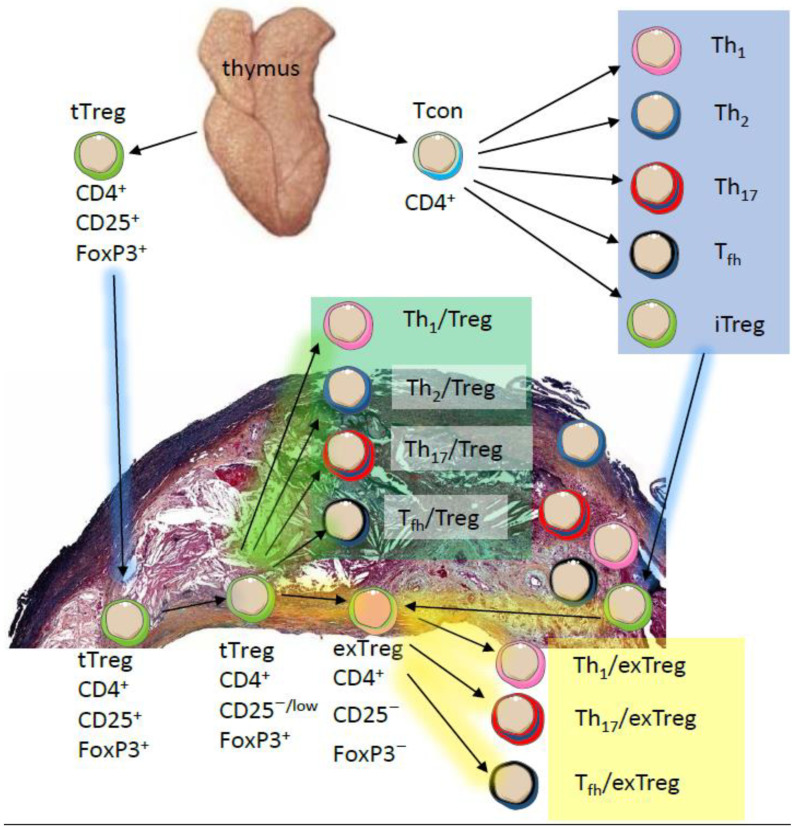Figure 1.
The thymus produces CD4+CD25+FoxP3+ tTregs (green), CD4+ conventional T cells (Tconv, blue) and many other cells (not shown). tTregs can migrate (blue arrows) into atherosclerotic lesions and the adventitia and maintain their phenotype. CD4+ Tconv differentiate into T-helper (Th)1, 2, and 17; Tfh; and induced iTregs. All of these (blue box) can also migrate into atherosclerotic lesions and the adventitia. In the lesion environment or in secondary lymphoid organs (not shown), both tTregs and iTregs can gain expression of T-bet for Th1, GATA3 for Th2, RORγt for Th17 or Bcl6 for Tfh, while maintaining expression of FoxP3 (Treg plasticity, green box). tTreg and iTregs can lose CD25 and FoxP3 expression and become exTregs that have a Th1, Th17, or Tfh phenotype (Treg instability, yellow box).

